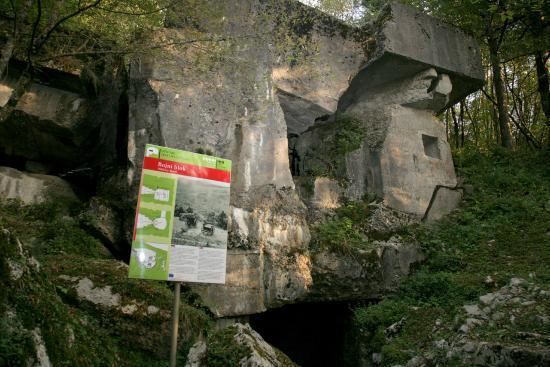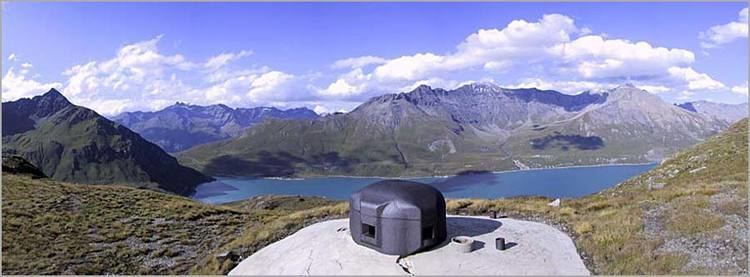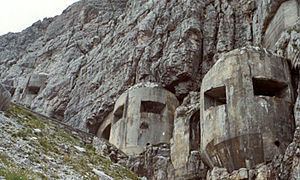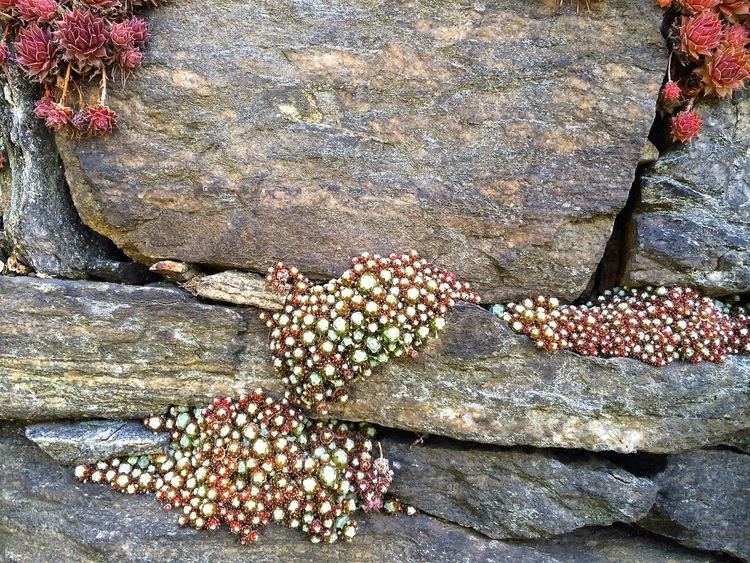Type Defensive line In use 1935–91 Material Concrete | Built 1930–42 Materials Concrete, steel | |
Alpine wall tour trailer 2015 subtitles
The Alpine Wall (Vallo Alpino) was an Italian system of fortifications along the 1851 km of Italy's northern frontier. Built in the years leading up to World War II at the direction of Italian dictator Benito Mussolini, the defensive line faced France, Switzerland, Austria and Yugoslavia. It was defended by the "Guardia alla Frontiera" (GAF), Italian special troops.
Contents
- Alpine wall tour trailer 2015 subtitles
- Alpine wall tour 2015 polak potrafi
- Characteristics
- History
- The Alpine Wall during World War II
- After World War II
- Abandonment
- Arrangement
- Fortifications
- Armament
- Guardia alla Frontiera
- References
Alpine wall tour 2015 polak potrafi
Characteristics
The Alpine line was similar in concept to other fortifications of the same era, including the Maginot Line of France, the Siegfried Line of Germany, and the National Redoubt of Switzerland.

Italy's land frontiers were in most places mountainous and easily defended, but in the years leading up to World War II, Italy's relations with its neighbours were uneasy. Even in its dealings with its German ally, Italy was concerned about German ambitions towards the province of South Tyrol, inhabited by a German majority.

Due to the rugged nature of the Alpine frontier, defences were confined to passes and observation posts in accessible locations.
History

Work on the Alpine Wall began in 1931, intended to cover an arc from the Mediterranean coast at Ventimiglia in the west to Fiume on the Adriatic coast in the east. Three zones were designated at increasing distances from the frontier:

Three types of fortifications were provided:
The work, which was carried out in secrecy using Italian labor, was a significant economic burden, resulting in 208 opere with 647 machine guns and fifty artillery pieces. Construction continued until 1942. The forts were armed with a mixture of new weaponry and older equipment from World War I. Provisions were made to deal with the use of poison gas. Much of the armour was obtained from Germany in compensation for Italian military ventures on behalf of the Axis.
The Alpine Wall during World War II
Little use was made of the Alpine Wall during World War II. During the Italian invasion of France in 1940, some western forts such as Fort Chaberton exchanged fire with their French counterparts of the Alpine Line. Chaberton was hit by French 280mm field mortars and suffered disabling damage. In addition, some Alpine Wall fortifications were used defensively by the Germans in 1944.
After World War II
At the end of the conflict, some of the western fortifications were destroyed, while portions of the eastern works were transferred to Yugoslavia as part of the occupation of eastern territories by that country. The 1947 Paris Peace Treaty forbade the construction or expansion of fortifications within twenty kilometers of the border.
However, with Italy's membership in NATO, construction began on a new defensive line from Austria to the Adriatic along the Yugoslavian border along the Natisone and Tagliamento rivers. The new line used tank turrets in a manner similar to German defences during the previous conflict, allowing 360 degree traverse and a high rate of fire. By 1976 this system was still considered useful in any conflict short of nuclear war.
Abandonment
The end of the Cold War brought an end to the usefulness of the Alpine Wall. The emplacements were stripped and sealed in 1991-1992. No functional fortifications have been preserved.
Arrangement
The fortifications were primarily constructed in the flanking heights of the valleys, with works within the valleys only where they were sufficiently wide. Anti-tank guns, artillery and machine guns were trained on prepared fields of fire, with observation stations at higher points. Shelters for infantry were located rearwards. A system of communications links and roads, or for higher locations, ropeways were provided for communication and supply.
Fortifications
The individual fortifications were typically built in rock on valley sides. Where this was not suitable, concrete was used for protection, with a minimum of openings and three to five metres of concrete thickness. Combat blocks were to the front, with ammunition rooms behind. Underground galleries connected the combat blocks and their support areas, such as the utility rooms, barracks, storage and command centres, with the main entry farthest to the rear. Combat areas were isolated from the rest of the structure by gas-tight doorways. Units built after 1939 were designed to operate independently, cut off from utilities and supplies.
Fortifications were camouflaged so that they appeared to blend with the surroundings, whether doors or embrasures were open or closed. Emergency escape routes were also provided.
Armament
Typically an anti-tank gun and a number of machine guns. Post-war units used tank turrets.
Usual armament included:
Fortifications were usually surrounded by minefields and barbed wire. Where feasible, an anti-tank ditch was provided.
Guardia alla Frontiera
The Vallo Alpino was mainly defended by the 21,000 strong "Guardia alla Frontiera" (G.A.F.), a special Italian Corp created in 1937. They defended the 1.851 km of northern Italian frontiers with the so-called "Vallo Alpino Occidentale" (487 km with France), "Vallo Alpino Settentrionale" (724 km with Switzerland and 420 km with Austria) and "Vallo Alpino Orientale" (220 km with Jugoslavia).
